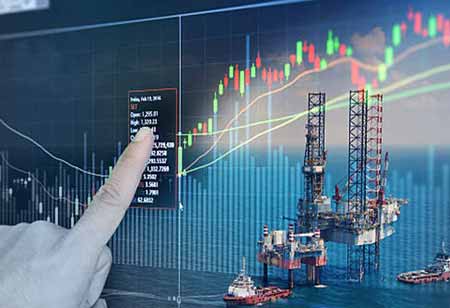Thank you for Subscribing to Energy Business Review Weekly Brief
Objectives Of Robotics In The Renewable Energy Sector
As technology grows across global industries, robotics possess the key to improved accuracy, precision, and cost savings. But robotics might also play a vital role in energy sustainability.

By
Energy Business Review | Saturday, April 16, 2022
Stay ahead of the industry with exclusive feature stories on the top companies, expert insights and the latest news delivered straight to your inbox. Subscribe today.
The solar energy production process can be mechanized and streamlined with robotics. However, robots can also carry out dangerous tasks for humans, like removing dust from solar cells.
FREMONT, CA: As technology grows across global industries, robotics possess the key to improved accuracy, precision, and cost savings. But robotics might also play a vital role in energy sustainability. This angle is particularly true when one considers the environmental advantages of automation.
It is familiar that robotics can help protect the oceans, from enhancing wastewater treatment to better fuel efficiency on ships. Thus, robotic assistance can positively affect the sustainable energy sector.
Robotic assistance in the empire of solar energy confirms to be beneficial. The solar energy production process can be mechanized and streamlined with the help of robotics. Robots can also carry out crucial tasks, like removing dust from solar cells. The job of dust removal is important to the maximum output of solar energy systems, specifically in dust-prone regions.
Energy Efficiency: Challenges and Advantages
Integrating robotics into the alternative energy sector comes with a set of challenges. One of the major issues is the current power grid, chiefly designed to transport energy from large power plants running on natural gas and coal sources. Therefore, most power grids are old-fashioned and need an update before alternative energy can be accurately united as a possible source of power.
Experts agree that modern approaches to power grid design are required to propel the energy sector into the future. The smart power grids may provide the answer by integrating several renewable energy sources and helping utility corporations to reduce outages. In addition, AI and automation are needed elements in the greater picture of energy efficiency to attain greater competence and sustainability.
Robotic assistance may also support conserving natural resources while refining efficiency. For example, in response to the peril to salmon populations at dams, one laboratory has taken an innovative approach. It introduced small devices, dubbed sensor fish, into waterways surrounding dams in the region. Once submerged, the robotic sensor fish then collects data like water pressure and orientation. It is anticipated that the information gathered by sensor fish can help dam operators and engineers design and administer hydropower plants in an eco-friendly manner. In this manner, robotic assistance may catalyze hydropower plants' more watchful and eco-friendly construction and operation.






